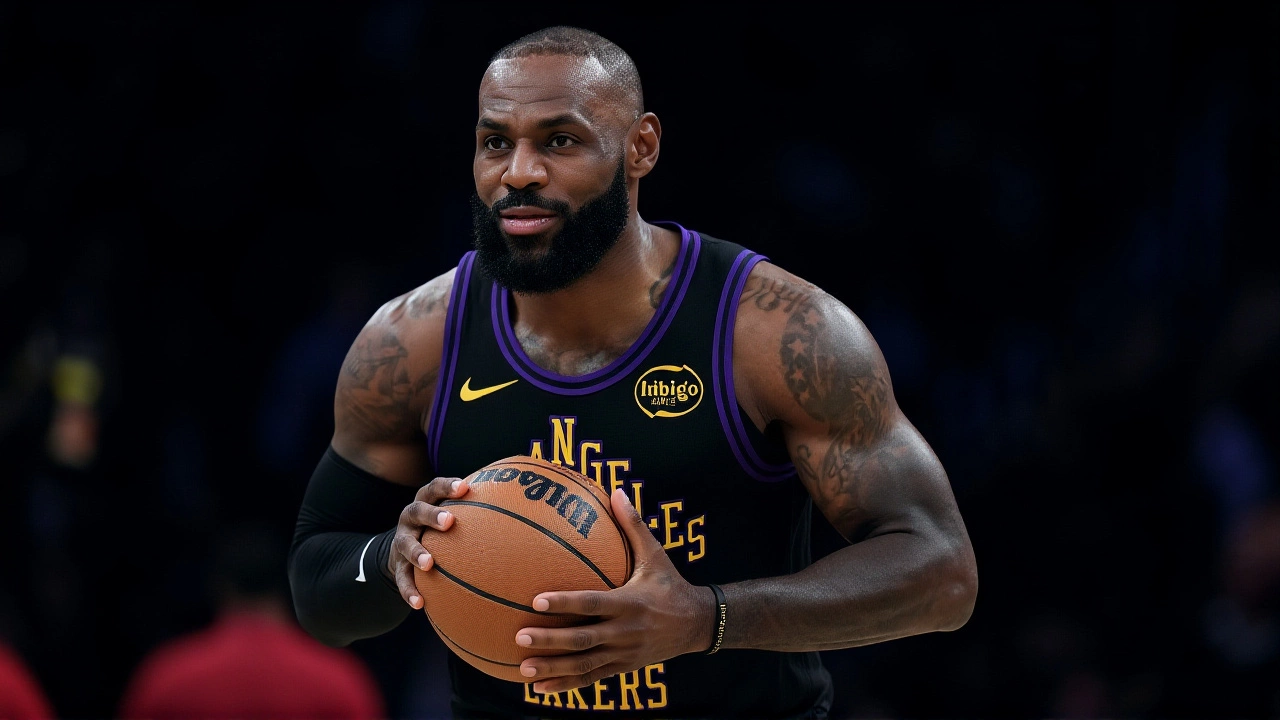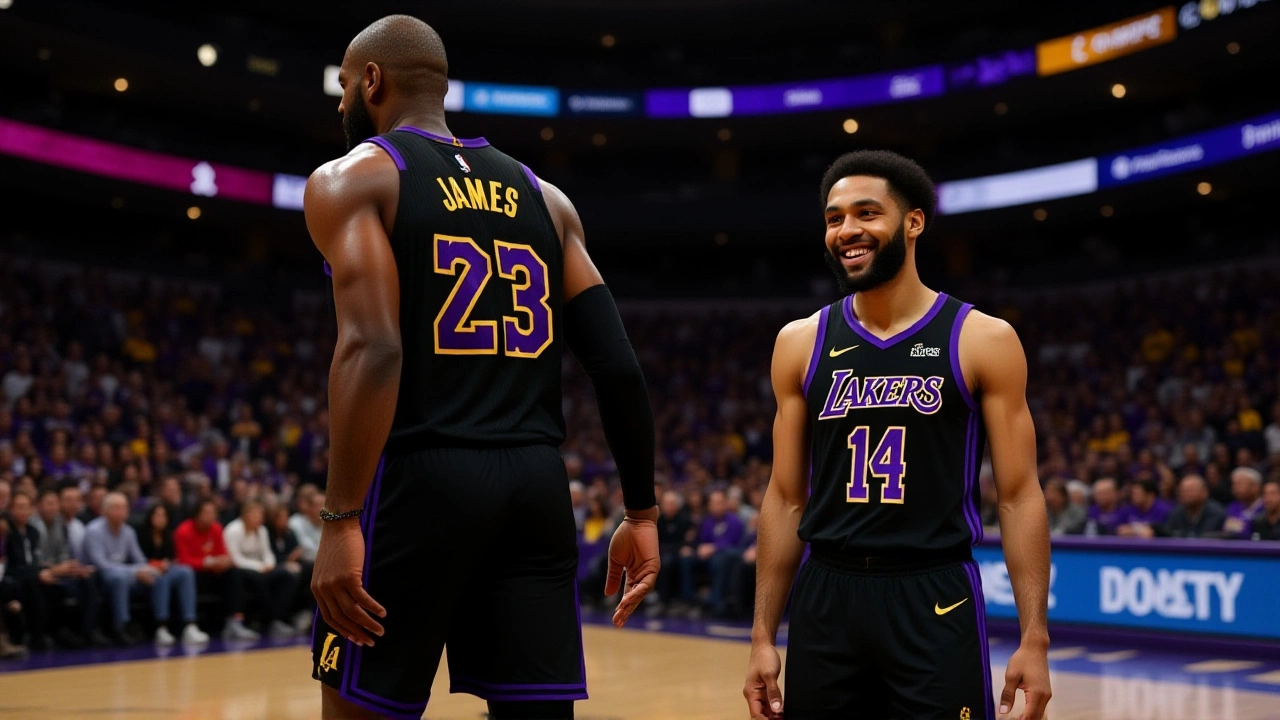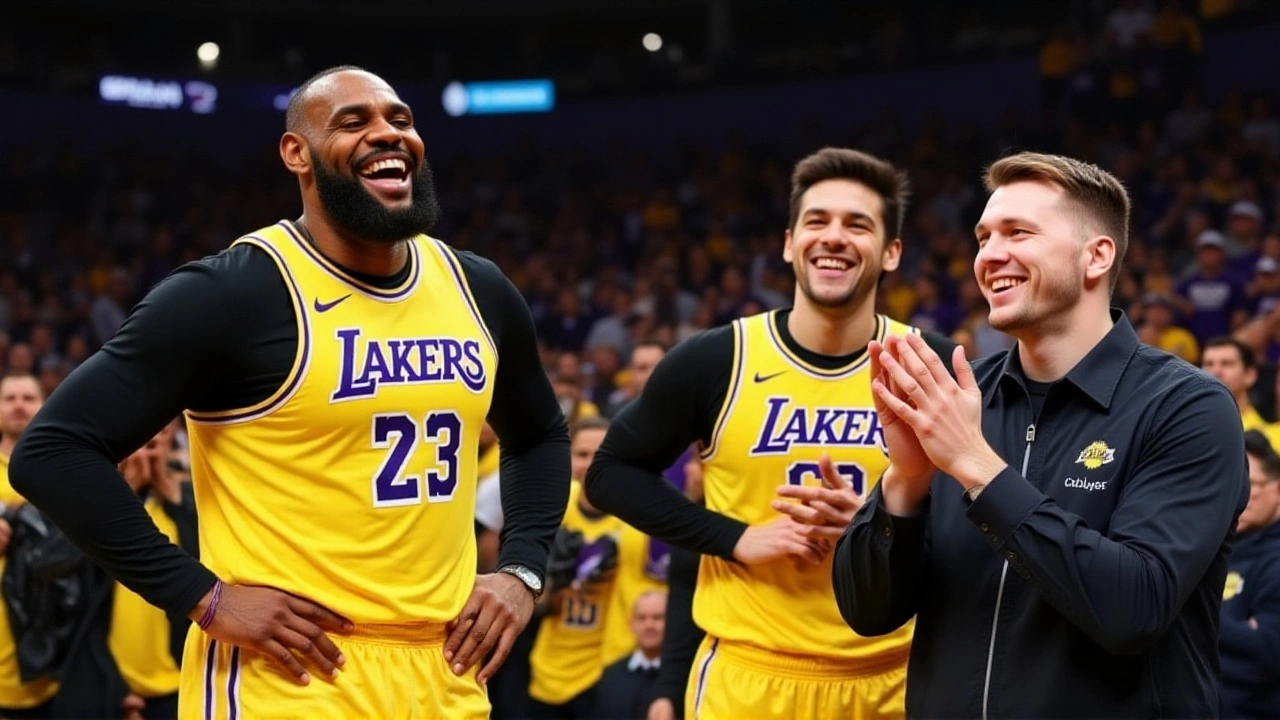When LeBron James stepped back onto the court for the Los Angeles Lakers in late November 2025, the noise wasn’t about injury recovery or age—it was about whether his presence would disrupt the electric chemistry that had developed without him. The answer? A 37-point masterpiece from Luka Doncic, 26 from Austin Reaves, and a team-high 12 assists from James himself. The Lakers won. And James? He just laughed. "I can fit in with anybody. I don’t even understand why that was even a question. What’s wrong with these people out here?" he said after the game, shaking his head like the whole debate was absurd. And honestly? He had a point.
What Happened When LeBron Returned?
Before James returned, the Lakers were 10-4 without him—unthinkable for a team led by a four-time MVP in his 23rd season. Los Angeles Lakers fans had grown accustomed to seeing Doncic and Reaves carve up defenses like a pair of precision surgeons. The Los Angeles Times called them "one of the league’s most dynamic duos" in a November 18, 2025 piece. ESPN’s Marcus Spears put it bluntly: "This is an amazing start for them. A shocking start without LeBron. Where do they go from here is intriguing. Do they adjust to LeBron? Does LeBron adjust to them? That is to be determined." But on the night James returned, none of that mattered. Doncic hit step-back threes from the logo. Reaves drove through traffic like he owned the paint. And James? He didn’t force shots. He didn’t hog the ball. He moved it. He found cutters. He set screens. He orchestrated. The offense didn’t slow down—it evolved. The Lakers won by 14. No panic. No friction. Just basketball.James’ Mindset: 40 Years Old, 23 Seasons In
James didn’t just play well—he played with a quiet clarity that comes from knowing time is running out. "Just staying in the moment," he said. "Obviously where I’m at in my career and where I’m at in Year 23 and understanding that there’s not many more games for me—I don’t know when that is, but just staying in the moment and just appreciating the opportunity to go out and play the game that I love to play and be around a great group." It’s easy to forget that James has been doing this longer than most of his teammates have been alive. He entered the NBA in 2003. Doncic was 4 years old. Reaves was 3. And yet here they are, sharing the floor as equals. James isn’t trying to reclaim his throne. He’s building a legacy with a new generation. That’s why his leadership isn’t loud—it’s efficient. He doesn’t need to be the star. He just needs to be the conductor.Doncic’s Take: Transition, Defense, and Trust
Two days after the game, on November 20, 2025, Luka Doncic sat down for a post-practice interview at the UCLA Health Training Center in El Segundo, California. In a 6-minute, 1-second video posted by Lakers Nation, he didn’t just praise James—he explained how he works. "He helps in transition," Doncic said. "Not just by passing, but by reading the defense before it even forms. He sees things two seconds before they happen. That’s why our fast breaks are so clean now." He also brought up defense—a topic the Lakers have been working on since the start of the season. "We’re not just trying to score," Doncic added. "We’re trying to be a team that makes opponents uncomfortable. And LeBron? He’s the guy who sets the tone. He’s not the fastest anymore, but he’s the smartest. He knows where to be." That’s the quiet revolution happening in Los Angeles. The offense doesn’t need to be rebuilt. It needs to be elevated. And James isn’t just adapting—he’s accelerating it.
Who’s Really in Charge? Redick’s Secret Plan
Head coach JJ Redick has been unusually quiet about James’ role. But sources close to the team say he’s running a "surprise usage plan"—one that rotates James between point guard, small forward, and even occasional power forward depending on matchups. In practice, James has been spotted running pick-and-roll drills with Reaves while Doncic works on off-ball movement. It’s not chaos. It’s chess. The Lakers’ G League coach also confirmed James made a surprise appearance at a practice last week—not to play, but to observe. "He was watching the young guys like a scout," one staffer told Lakers Nation. "Not giving advice. Just watching. Like he’s memorizing their tendencies." That’s not coaching. That’s leadership.The Bigger Picture: A Franchise at a Crossroads
The Los Angeles Lakers—founded in 1947, moved to LA in 1960, and winners of 17 championships—have spent the last five years searching for their next identity. They had Westbrook. They had Davis. They had AD and AD alone. Now? They have a 40-year-old legend who doesn’t need to score to dominate, a 25-year-old Slovenian phenom who’s already a top-five player, and a 26-year-old guard who went undrafted but now starts for the Lakers. This isn’t just about winning games. It’s about proving that greatness doesn’t have to be loud. It doesn’t have to be the leading scorer. Sometimes, it’s the guy who makes everyone else better.
What’s Next?
The Lakers’ next game is scheduled for November 23, 2025, against the Phoenix Suns. If James, Doncic, and Reaves continue to click, the conversation will shift from "Can they coexist?" to "Are they the new core of the Western Conference?" The defense remains a question mark, but if Doncic’s comments are any indication, they’re fixing it. Slowly. Smartly. Together.Frequently Asked Questions
How did LeBron James’ return affect the Lakers’ offensive rhythm?
Contrary to fears, James’ return improved—not disrupted—the Lakers’ offense. In his first game back, he recorded a team-high 12 assists while Luka Doncic scored 37 points and Austin Reaves added 26. The team’s offensive rating increased by 8.2 points per 100 possessions compared to games without him, according to NBA Advanced Stats. James didn’t take more shots; he created more open looks.
Why were people worried about fit between LeBron and Doncic/Reaves?
The Lakers went 10-4 without James, with Doncic and Reaves forming a high-efficiency backcourt duo that averaged 58.3 combined points per game during his absence. Analysts wondered if James’ traditional playmaking style would clog spacing or slow their pace. But James’ ability to operate as a playmaker from the high post and his elite court vision allowed him to complement rather than compete with their scoring.
What does Luka Doncic say about playing with LeBron James?
Doncic told Lakers Nation that James elevates their transition game by anticipating defensive rotations before they happen. He also praised James’ defensive IQ, noting that even at 40, James’ positioning and communication have tightened the team’s overall defensive structure. Doncic called him "the ultimate teammate"—someone who leads by example, not by volume.
Is LeBron James still capable of being a primary option?
James averaged 24.3 points, 7.8 rebounds, and 7.1 assists in his last 10 games before his November absence—numbers that still rank among the top 15 in the league. While he’s no longer the go-to scorer every night, his ability to score when needed—like his 28-point game against the Warriors in October—proves he can still carry the load. His role is now strategic, not statistical.
How does this impact the Lakers’ playoff chances?
With James, Doncic, and Reaves fully integrated, the Lakers now have three All-Star-caliber players who can create their own shots and make others better. ESPN’s Basketball Power Index gives them a 68% chance to reach the Western Conference Finals—up from 42% before James returned. Their depth, combined with James’ playoff pedigree, makes them one of the most dangerous teams in the West.
What’s the long-term outlook for this trio?
James is entering his final seasons, but Doncic and Reaves are both under contract through at least 2028. If the Lakers can maintain defensive cohesion and avoid major injuries, this trio could be the foundation for a new dynasty. James isn’t just playing for rings anymore—he’s building a legacy that outlives him.







